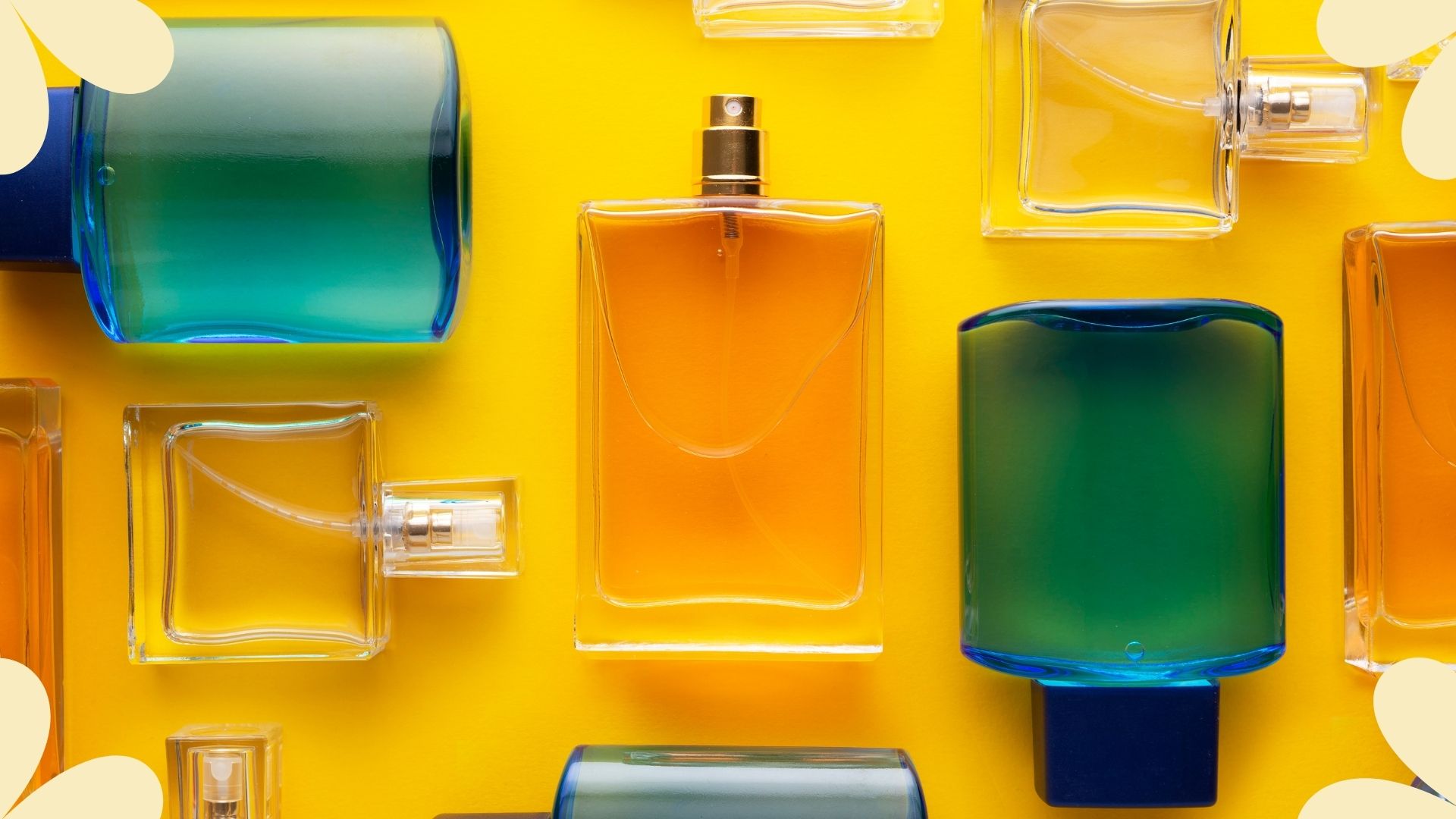Perfume notes explained: a simple guide to scent styles that’ll make perfume shopping easier forever
Puzzled by perfume notes? Find your signature scent with our expert guide


The perfume world can feel tricky to navigate—what are perfume notes? Why do they have a top, middle, and a base? What does parfum really mean? And does anyone really know what a fragrance wheel is? That’s why we’ve done all the hard work for you, stripped bare the many facets of fragrance, and explored and uncovered what they all mean.
And why should you care? Because a bit of knowledge can go a long way when shopping for a new-season scent. “I think it all depends on the person,” says senior perfumer at Givaudan and co-creator of Jimmy Choo I Want Choo, Sonia Constant. “Some people like to know what’s inside their perfume so they can make an informed purchase. By knowing what they like they can look for more of the same, while others want to keep the magic of mystery. There’s value in both.”
Whether you’re looking for the best perfume for women, maybe you’re on the hunt for the best men's cologne as a gift or you’re trying to discover the ultimate long-lasting perfume, being armed with this knowledge will help you find your perfect scent.
Perfume notes, styles and families explained
What are perfume notes?
When you hear or read anything about perfume notes, think of them as the ingredients of the perfume. And there are thousands. Even with one ingredient—take rose for example—there are different types of rose perfume notes depending on how it has been distilled and extracted. There is no limit to how many notes a fragrance can contain, but nearly every perfume will have at least three to form a top note, middle note (sometimes called the heart note), and base note.
- Top notes: "The top notes are what you can smell at the very beginning, as soon as you spray the fragrance and they are often fruity perfume notes, green notes, or aromatic notes,” explains Constant. Their low molecular weight means they don’t linger for very long but they give you that instant sense of what a scent is like.
- Middle notes: Next, come the middle notes that have a slightly heavier molecular weight compared to the top notes. “These are the ones you can smell after one or two hours and in general are floral or spicy notes,” says Constant.
- Base notes: It will come as no surprise that base notes are the more decadent, rich, and unctuous ingredients. “The base notes stay longer on the skin and clothes. They are composed of very heavy molecules such as woods, vanilla, and amber.” It is the composition of the base notes that will determine which perfume lasts longest.
Notes are often displayed on perfume websites, or you may see them illustrated on the packaging, in the structure of a pyramid. It’s a fitting shape because the highest, but smallest, part of the pyramid demonstrates the top notes—highlighting their instant impact but flighty nature. The middle section represents the heart notes. And the base of the pyramid, which supports everything else and grounds the scent, represents the heaviest and most long-lasting ingredients.
It is this construction of a perfume that gives it the ability to transport you to lots of places in just one spray. On the first smell, the scent might remind you of one thing, then by the time it’s dried down and combined with your skin it can smell completely different. This is why the best vanilla perfume can start out unexpectedly fruity, then dry to a warming vanilla base. Similarly, floral fragrances can end up smelling more musky than flowery on the skin due to their base notes.
Families and the fragrance wheel
After perfume notes, the next thing to get your head around is fragrance families. These are the classifications that group scents together and is one of the most useful things to know, because if you like a certain type of fragrance then chances are you will also like others that belong to the same family. There is some debate over how many fragrance families there are. Some argue that there are only four main fragrance families—floral, fresh, woody, and amber. However, others state there are eight families with the addition of gourmands, chypres, aquatics, and fougères.
Sign up for the woman&home newsletter
Sign up to our free daily email for the latest royal and entertainment news, interesting opinion, expert advice on styling and beauty trends, and no-nonsense guides to the health and wellness questions you want answered.
Fragrance families are often thought of as a wheel. The way the fragrance wheel works is similar to the color wheel (cast your mind back to school art class) Fragrance families that are opposite each other on the wheel clash, and the ones that are next to each other blend into one another. For example, bold florals such as a classic rose perfume sits next to fruits and softer flower scents, as these perfume notes tend to gel. Once you know which fragrance family naturally appeals to you then you’ll probably also like those on either side, but may be less keen on the one opposite it.
Sonia Constant explains the unique characteristics of the most popular fragrance families:
- Florals: "They are made, in general, with a large number of floral notes, can be a single flower or a floral bouquet. The top notes are generally green, fruity, or citrus, but some also contain fresh spices such as pink peppercorn. The bottom notes are generally woody and musky, but the family evolves with more gourmand notes."
- Chypre: "This is an accord combining perfumes with patchouli, oakmoss, rose, jasmine and bergamot. It can be facetted in many ways, the latest trend is to add some fruity and gourmand notes to modernize the classical chypre structure or to add an overdose of musks to make it softer."
- Woody: "Fragrances within the woody family focus on bottom notes of woods and they often come with musks, spices, and fruits. Lots of masculine woody scents have aromatics on top." These notes are also often featured in perfumes for winter, thanks to their deep and aromatic aromas.
- Citrus: "Contain a top note that is a mix of citrus notes such as bergamot, orange, mandarin, and lemon. The bottom note is typically more woody-chypre with the likes of patchouli and moss.."
- Fougere: "These are originally based on tonka bean, patchouli, geranium, lavender, and bergamot, but it has evolved a lot over time and now it is very common now to find gourmand notes—which are the more edible type ingredients like caramel and cocoa—in a fougere.
How to choose perfume concentrations
The last thing to consider in your fragrance buying journey is concentration, as this affects the intensity of the scent and perhaps most importantly, how long it lasts on your skin. Karen Harris, Head of Marketing at The Perfume Shop, explains:
- EDT: This stands for Eau de Toilette and it is probably the most popular perfume concentration on the fragrance shelves. Of all the fragrance types this lingers for the least amount of time because it contains the least amount of essential oils and will need topping up throughout the day. It also tends to be less expensive than its EDP counterparts.
- EDP: Eau de Parfum (EDP) contains a higher concentration of fragrance oil, roughly around 20%, which means they last longer on the skin. EDP sits above EDT for strength and longevity and therefore is slightly more expensive. High-end brands often bring out EDP and EDT versions of their best-loved scents, so it's likely your best Dior perfume, for example, is available in both.
- Parfum: Are considered the creme de la creme of the fragrance concentrations as they contain the most amount of essential oil—anywhere from 20% upwards. They last far longer than an EDT or EDP but because of the high concentration of ingredients, they carry a higher price tag. You truly are paying for what you get with a parfum.
- Aftershave: Typically found in men’s fragrances and contain around 80-90% alcohol content and a very low percentage of essential oil. Aftershave is best used to soothe the skin after shaving. The term now is generally used to describe men’s fragrances as a whole, but traditionally you would use an aftershave alongside an EDT or EDP.
- Cologne: Often associated with male fragrances, but you can find female colognes as well. They are another low concentration of scent, normally containing around 5% of aromatic compounds. However, despite being low on the strength scale, a cologne is designed to linger on your skin, unlike an aftershave. Many of the best Jo Malone fragrances are eau de cologne, and their light nature makes them are great for everyday use, although you may have to top up as the day progresses.
This basic know-how about perfume notes, families, and concentrations can be truly empowering when shopping for scent. Assess the perfumes you already own and look out for what ties them together, from a common ingredient, style or strength. This will help you filter through the countless perfume notes and blends available and discover beautiful new fragrances that you will love forever.
Happy scent shopping!
woman&home thanks Sonia Constant and Karen Harris for their time and expertise.

Sarah-Jane Corfield-Smith has worked in the beauty industry for more than 15 years and, as well as woman&home, has contributed to titles such as Stylist, The Daily Mail and The Times. As a mum of two little girls she has limited time to spend on herself, so if you’re looking for hard-working multi-tasking products, she’s the one in the know. Her top three products she has on her at all times are a glow-giving tinted moisturizer, brow pencil and a tinted lip balm. Oh, and she’s never far away from a hydrating face mist.